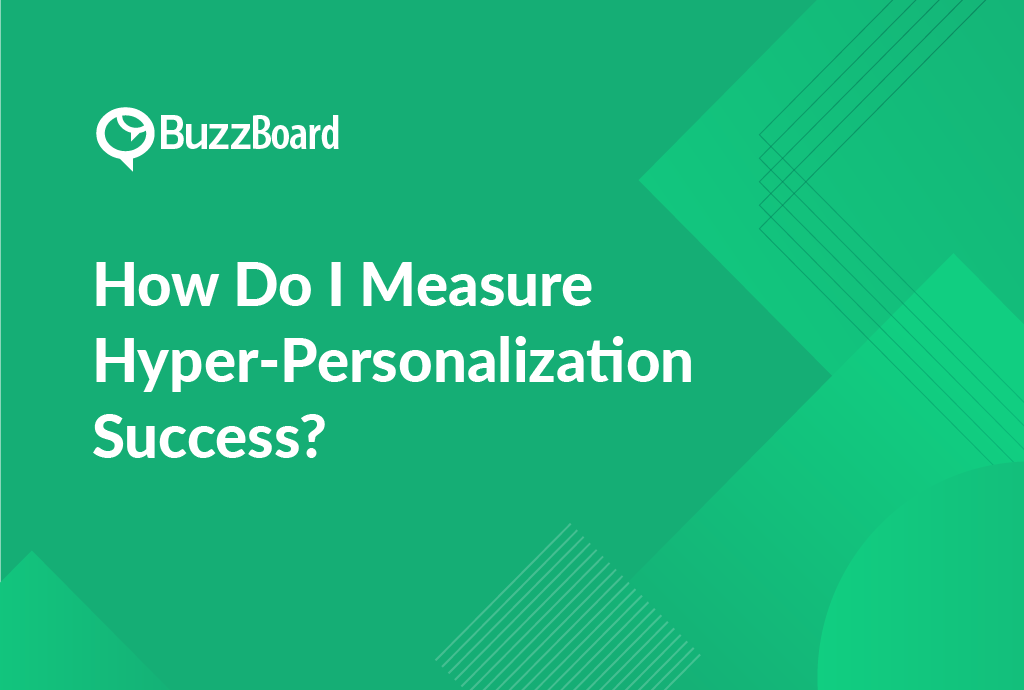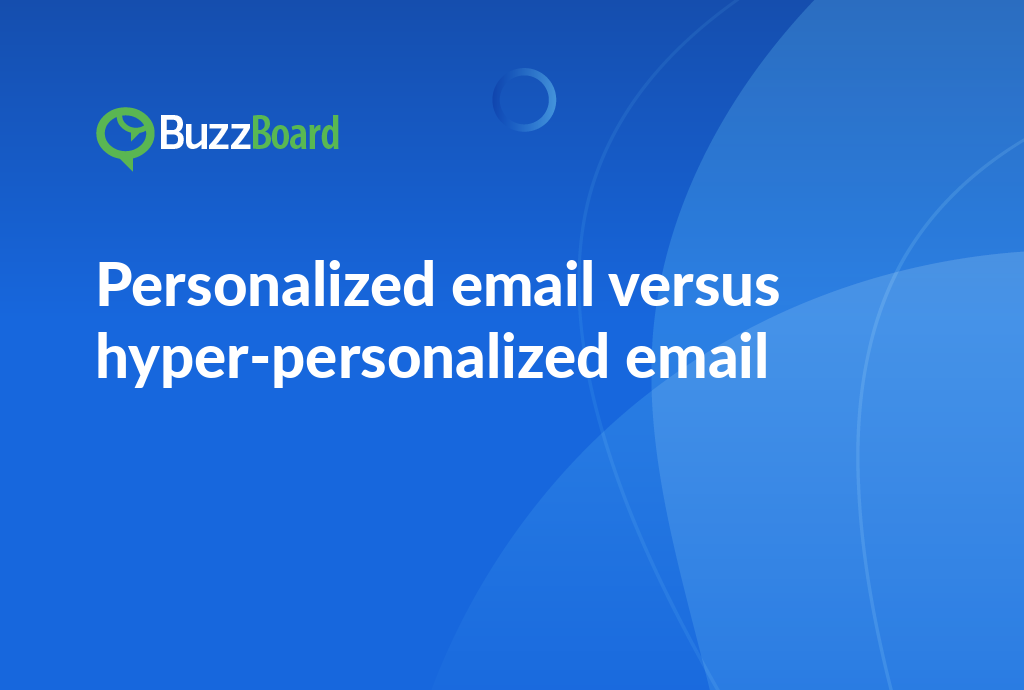Summary
Measuring the success of hyper-personalization requires a data-driven approach. Start by tracking key performance indicators (KPIs) such as customer engagement, conversion rates, and revenue growth. Additionally, monitor metrics like click-through rates, open rates, and click-to-open rates for email marketing campaigns. Analyze customer feedback and sentiment analysis to gauge the effectiveness of personalized content. Use A/B testing and experimentation to validate the impact of hyper-personalization on business outcomes. By regularly monitoring and optimizing these metrics, businesses can ensure the success of their hyper-personalization strategy and drive long-term growth.
Understanding the concept of hyper-personalization
Understanding the concept of hyper-personalization is integral for sales professionals in digital marketing agencies. This strategy offers a competitive edge, leveraging advanced technologies and data analysis to deliver individualized customer experiences. Hyper-personalization extends well beyond simply customizing an email recipient’s name; it involves comprehending and anticipating customer behaviors and preferences.
Hyper-personalization can be achieved through customer journey optimization. This process entails analyzing every customer touchpoint with your brand – from the initial engagement to the final sale. The objective is to tailor each interaction to be as relevant and personalized as possible, thereby enhancing customer engagement metrics.
A common method employed to maximize personalization relevance is A/B testing. This involves comparing different versions of a webpage or email to identify which version performs better. This enables sleek targeting of audiences with the most enticing content, thereby boosting conversion rates and customer satisfaction.
Moreover, incorporating personalization best practices can bolster the effectiveness of personalized experiences. For instance, customer segmentation based on behaviours and leveraging real-time data can enhance the impact of these personalized interactions.
To deepen your understanding of hyper-personalization and how to employ it, feel free to explore. By staying informed about the best industry practices, you can ensure your personalization approach is as effective as possible.
Remember, hyper-personalization isn’t a one-off strategy, but a continuous process of evolution, learning, and adaptation. Stay abreast of the latest strategies by reading about it.
Stay on track with current trends and drive improved customer engagement with hyper-personalization.
Sources:
The role of customer journey optimization in hyper-personalization
In today’s digital landscape, hyper-personalization has risen as a crucial strategy for businesses seeking to build strong connections with their customers. It focuses on delivering content, products, and services tailored for individual customers, considering their particular needs, desires, and behaviors. In this process, the significant role of customer journey optimization is undeniable.
Fundamentally, customer journey optimization is an essential element of hyper-personalization. It involves mapping the various touchpoints a customer has and identifying opportunities to enhance their experience at each stage. By utilizing customer engagement metrics, businesses can gain insights into customer behavior, preferences, and demands, thereby ensuring a more personalized and satisfactory journey.
An effective means of hyper-personalization is the execution of A/B testing for personalization. This comparison tool allows businesses to pinpoint which of two different approaches resonates more with their audience. This data-driven technique can provide priceless insights into customer behavior and preferences, pinpointing the most effective engagement method.
Nevertheless, understanding personalization best practices is vital for successful businesses. Typical strategies may include providing personalized recommendations, delivering timely and relevant content, and streamlining customer journeys.
To exploit hyper-personalization’s potential, businesses must prioritize customer journey optimization. Achieving this requires an understanding of customer needs and preferences, the effective application of A/B testing, and adherence to personalization best practices.
Further insights on implementing these strategies in your business can be found in our latest resources linked below.
Remember, leveraging customer journey optimization is key to hyper-personalization success. This practice not only fosters deeper connections with customers but also nurtures customer loyalty, which ultimately boosts business growth.
How A/B testing for personalization can measure success
In today’s digitally-focused era, both small and large businesses need to adopt hyper-personalization strategies in their marketing efforts. This critical aspect of customer journey optimization is enabled and quantifiable via a method known as A/B testing for personalization.
Essentially, A/B testing allows companies to generate two or more renditions of a single webpage, email or advertisement. They can then channel various audience segments to each version and measure which one garners better performance in terms of customer engagement metrics. By keeping track of user actions, companies can acutely pinpoint the type of content and design that best resonates with their targeted audience.
Through efficient A/B testing, companies can make informed decisions about what kind of personalization best serves their audience. This can greatly enhance customer journey optimization and bolster customer engagement metrics.
By experimenting with design elements, calls-to-action or content types and noting the results, brands can achieve personalization best practices. It aids in determining what works best for the intended demographic – whether it’s a local carpentry store or a high-end uptown boutique – thereby increasing the likelihood of successful engagement.
However, A/B testing for personalization isn’t a one-and-done process. For optimal results, companies need to frequently track, measure, and enhance their strategies. The objective is to continually improve the customer journey, making it as personalized as possible, and as a result, secure long-lasting, profitable customer relationships.
Hyper-personalization represents the future of customer interaction. Are you prepared for this transition?
For a comprehensive overview on how to effectively utilize A/B testing for personalization.
For further valuable insights on personalization best practices, customer journey optimization, and other pertinent subjects, please visit our other informative blog posts.
Remember, in the digital environment, knowledge is power. Informed decisions pave the way to successful engagements.
Examples of successful hyper-personalization strategies
Hyper-personalization strategies have revolutionized the approach businesses take to engage with their customers. Utilizing a fusion of data collection, artificial intelligence and machine learning, we can now customize customer experiences to an unprecedented extent.
Starbucks excels in hyper-personalization. They collect data pertaining to preferences and purchase history through their mobile app, enabling personalized recommendations. Furthermore, they adjust the suggestions based on the user’s location and the current weather. This strategy exemplifies customer journey optimization, where data drives a personalized brand-customer relationship.
Amazon, an e-commerce powerhouse, is highly recognized for their personalized product recommendations, which constitute one-third of their sales. They use complex algorithms to analyze shopping behavior, compare it with that of others, and suggest products accordingly. This integration of machine learning into customer engagement metrics helps in anticipating customer needs before they are even communicated.
Netflix employs hyper-personalization to promote their content. They do more than suggest movies or series based on past viewing. They also tailor visuals of the same show or movie based on individual user preferences, a method of A/B testing for personalization.
However, personalization best practices encourage vigilance regarding privacy issues. As consumers become more sensitive to potential data misuse, instituting reliable data protection measures is crucial.
To effectively harness the power of hyper-personalization in digital marketing, understanding its intricacies and keeping up with updates is key. For beneficial insights, we recommend a comprehensive guide to effective hyper-personalization techniques—accessible via this source. To summarize, combining technology with marketing proficiently can propel businesses toward remarkable success.
Navigating through the challenges and benefits of hyper-personalization
Hyper-personalization, a rapidly emerging concept, can reshape customer journey optimization strategies but may pose challenges for salespeople at digital marketing agencies. It’s vital to understand the top personalization practices that enhance seamless interaction with small and local businesses.
A significant challenge in hyper-personalization is the gathering and analyzing of relevant data, such as customer preferences, behaviors, and other vital customer engagement metrics. However, executing effective A/B testing for personalization can mitigate this issue substantially. A/B testing facilitates the comparison of two webpage versions to ascertain which performs better. This method makes it simpler to identify what resonates with customers, leading to a deeper understanding of their preferences.
Nevertheless, the perks of hyper-personalization are bountiful. It enables salespeople to interact with customers and clients on a more personalized level. Customers appreciate brand interactions tailored to their preferences, leading to higher customer engagement and loyalty. Hyper-personalization also creates avenues to target accurate demographics, allowing businesses to focus their resources where they are most likely to attain the desired engagement.
In conclusion, it’s a priceless skill for salespeople to continually refine, as clients lean towards marketing agencies to supply the most relevant, individualized content.
Stay connected with us to comprehend the ever-changing trends in digital marketing. Subscribe to our weekly newsletter.








